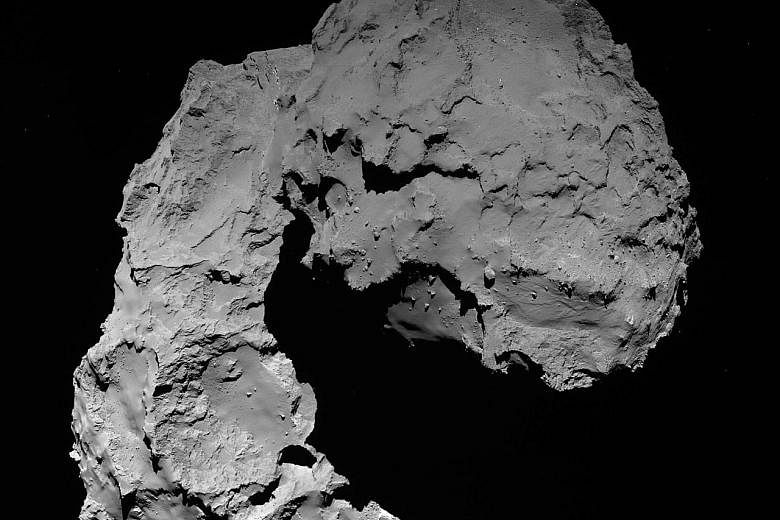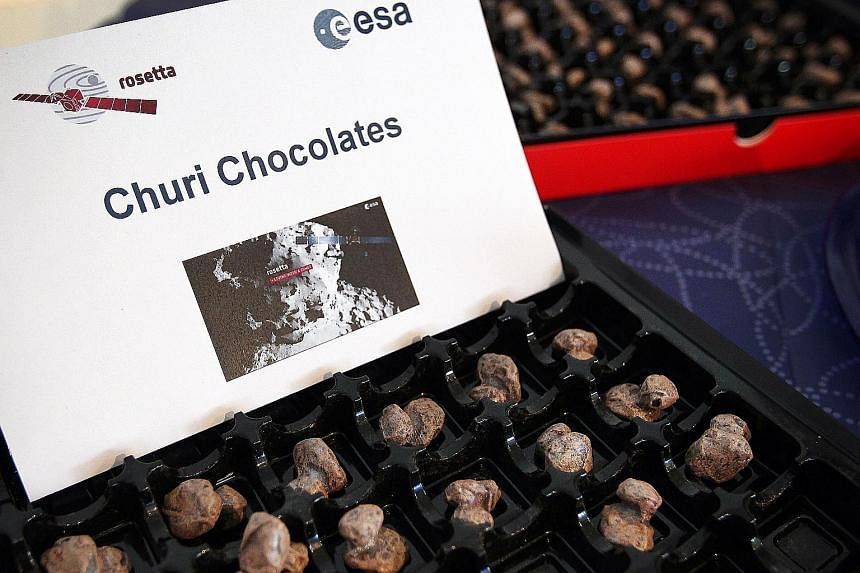DARMSTADT (Germany) • Europe's pioneering Rosetta spacecraft has ended a 12-year odyssey with a controlled crash-landing onto the comet it has orbited and probed for two years to unravel the secrets of the solar system's birth, mission controllers said.
"I can confirm the full success of the descent of Rosetta," European Space Agency mission manager Patrick Martin announced yesterday to wild cheering in the control centre in Darmstadt, near Frankfurt in western Germany.
"Rock-n-roll Rosetta," added a visibly moved Matt Taylor, the mission's project scientist.
In the hours before the crash- landing, Rosetta gathered crucial last-gasp data from nearer the comet 67P than ever before, its instruments primed to sniff the comet's gassy halo, measure temperature and gravity and take close-up pictures of the spot that is now its icy tomb.
The craft had been programmed for a "controlled impact" at the human walking pace of about 90cm per second after a 14-hour free fall from an altitude of 19km.
Confirmation of the mission's end came when the spacecraft's signal - with a 40-minute delay - faded from the ground controllers' computer screens.
The trailblazing craft's final manoeuvre was executed at a distance of 720 million km from Earth, with the comet zipping through space at a speed of more than 14km per second.
Mission scientists expected that the spacecraft would bounce and tumble before settling, but Rosetta's exact fate will never be known as it was instructed to switch off on first impact. The comet chaser was never designed to land.
The first mission to orbit and land on a comet was approved in 1993 as a way to explore the birth of the solar system 4.6 billion years ago.
Rosetta and lander probe Philae travelled more than six billion km over 10 years to reach 67P in August 2014. Philae was released onto the comet's surface in November of that year, where it gathered 60 hours of data which it sent home before entering standby mode.
Having made the closest approach on its 6.6-year loop around the Sun in August last year, the comet is now moving further away from the planetary system's central star, which means Rosetta's solar panels were catching fewer battery-replenishing rays.
Rather than just letting it fade away, scientists opted to end the mission on a high by taking measurements from very close to the comet - too close to risk under usual operating conditions.
On Thursday night, Rosetta was commanded to exit the comet's orbit and join the long-spent Philae on 67P for a never-ending journey around the Sun.
Flight operations director Andrea Accomazzo, who worked on Rosetta for nearly 20 years, confessed "of course there is a bit of sadness" after a "long, long" professional investment. "You are going to miss it. But, OK, life goes on," he said.
AGENCE FRANCE-PRESSE


